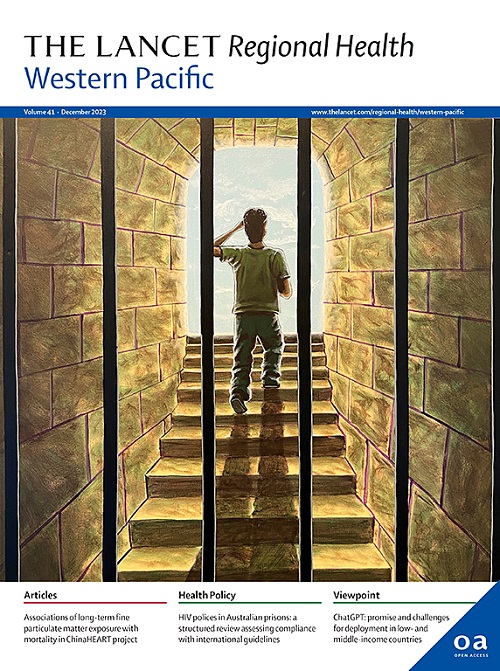Urban-rural differences in age-specific mortality rates for breast cancer in China from 2009 to 2021
IF 7.6
1区 医学
Q1 HEALTH CARE SCIENCES & SERVICES
引用次数: 0
Abstract
Background
Breast cancer is the fifth leading cancer-related cause of death among women in China. With the advent of the “Two cancers screening” national health plan from 2009, we aim to present the change and rural-urban differences in age-specific mortality rates during 2009-2021.
Methods
We extracted age-specific mortality data of breast cancer by rural-urban residence for Chinese women aged 20-84 years from 2009 to 2021 from China’s National Disease Surveillance Points system. The population data covering 166.1 million of women were grouped as 20-34 years, 35-64 years, and 65-84 years. We used negative binomial regression models to assess mortality rate ratios between urban and rural (reference) by time-periods. We assessed temporal trends in age-specific mortality rates for breast cancer using log-linear Joinpoint models.
Findings
From 2009 to 2021, the mortality rates of breast cancer changed from 13.73 per 100,000 women to 10.08 per 100,000 women in urban women aged 35-64 years with an average annual percent change (AAPC) of − 2.7% (95% CI − 4.6 to − 0.7, P = 0.007) and from 10.81 per 100,000 women to 10.91 per 100,000 women in rural women aged 35-64 years with an AAPC of 0.3%, (95% CI: − 0.3 to 0.9, P = 0.28). We identified comparatively minimal mortality disparities of breast cancer between urban and rural areas in the 35-64 age group (rate ratio: 1.12), compared to differences noted in younger (20-34 years, rate ratio: 0.82) and older groups (65-84 years, rate ratio: 1.64). The results among women aged 20-84 showed that the breast cancer mortality is significantly higher in urban than in rural areas, stratifying by time-period (rate ratio: 1.32 in 2009-2013, 1.23 in 2013-2017, and 1.11 in 2017-2021) and region (rate ratio: 1.27 in Central, 1.15 in Western, and 1.14 in Eastern). The results in the screening age of 35-64 group showed similar trends with overall population stratified by time-period (rate ratio: 1.20 in 2009-2013, 1.18 in 2013-2017, and 1.05 in 2017-2021) and region (rate ratio: 1.20 in Central, 1.07 in Western, and 1.08 in Eastern).
Interpretation
We found that breast cancer mortality in urban women was higher than that of rural women, with a decreasing temporal trend in rural-urban difference. The narrowing gap in breast cancer mortality rates between urban and rural areas may be related to the convergence of lifestyles in terms of reproduction, hormones, and other breast cancer risk factors among urban and rural residents. As socio-economic development and urbanization progress, differences in risk factors such as dietary patterns, lifestyles, and physical activity have become less pronounced nationwide, leading to a gradual reduction in the gap of breast cancer mortality rates between urban and rural women. This study provides insights into the changing landscape of breast cancer mortality in China, highlighting the need for continued efforts in screening and treatment, especially in urban areas where rates remain higher.
求助全文
约1分钟内获得全文
求助全文
来源期刊

The Lancet Regional Health: Western Pacific
Medicine-Pediatrics, Perinatology and Child Health
CiteScore
8.80
自引率
2.80%
发文量
305
审稿时长
11 weeks
期刊介绍:
The Lancet Regional Health – Western Pacific, a gold open access journal, is an integral part of The Lancet's global initiative advocating for healthcare quality and access worldwide. It aims to advance clinical practice and health policy in the Western Pacific region, contributing to enhanced health outcomes. The journal publishes high-quality original research shedding light on clinical practice and health policy in the region. It also includes reviews, commentaries, and opinion pieces covering diverse regional health topics, such as infectious diseases, non-communicable diseases, child and adolescent health, maternal and reproductive health, aging health, mental health, the health workforce and systems, and health policy.
 求助内容:
求助内容: 应助结果提醒方式:
应助结果提醒方式:


